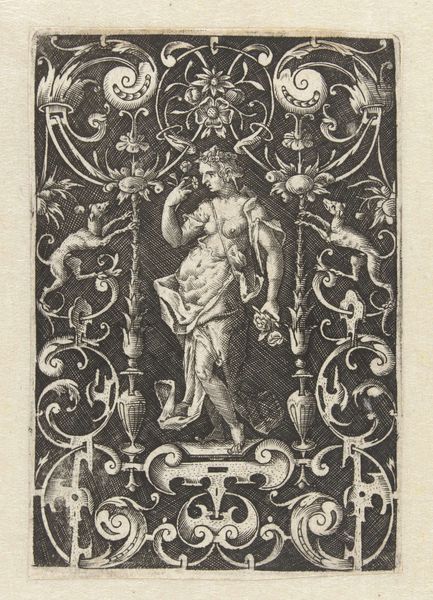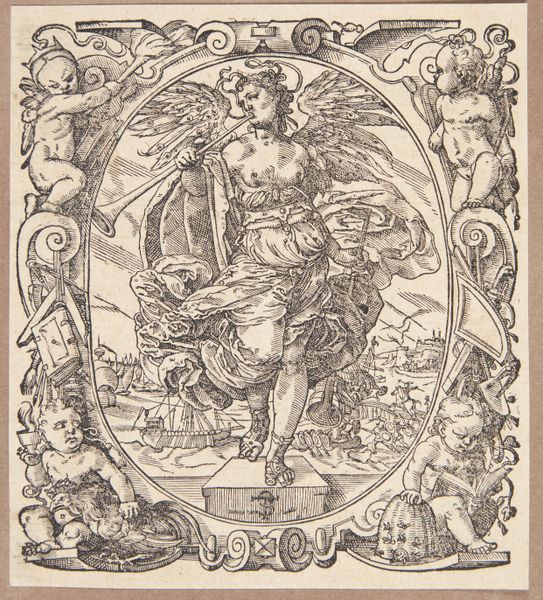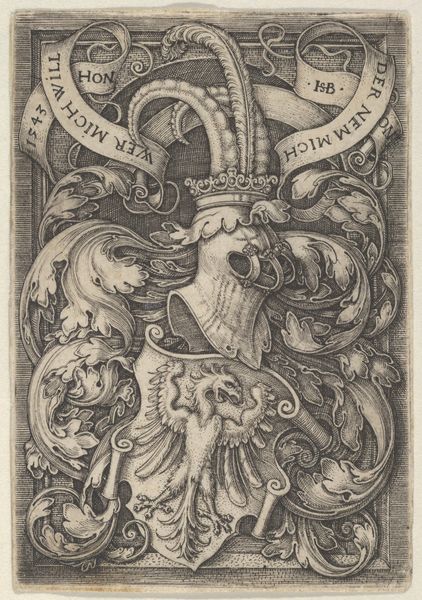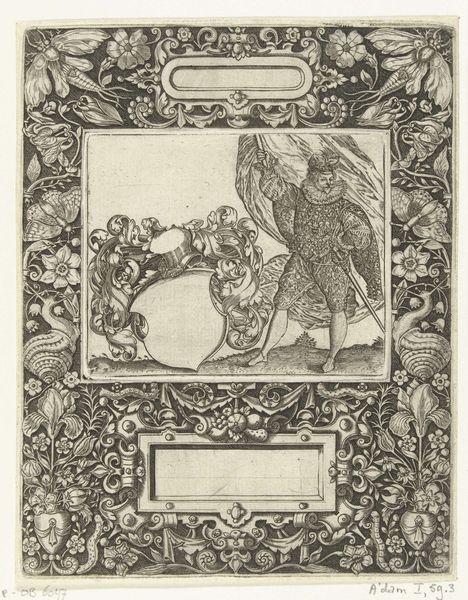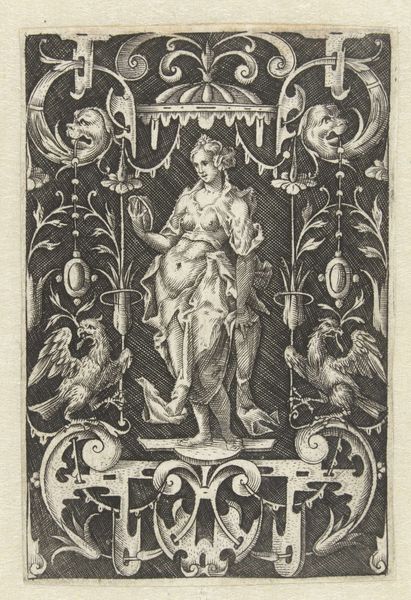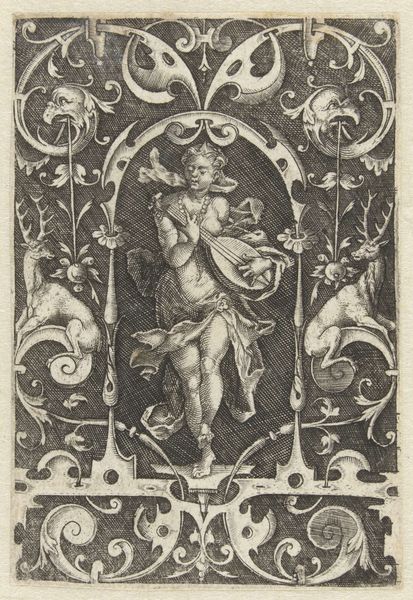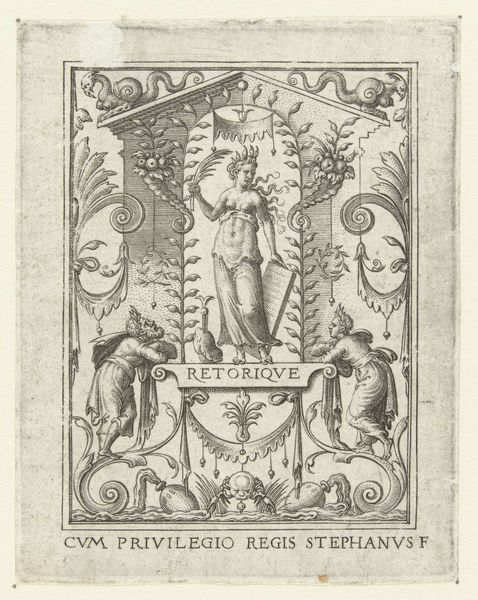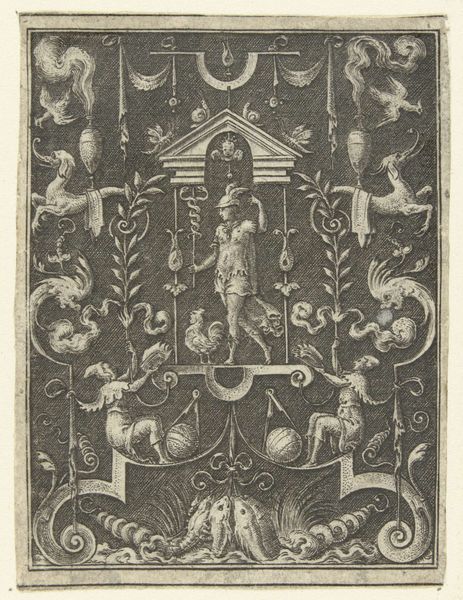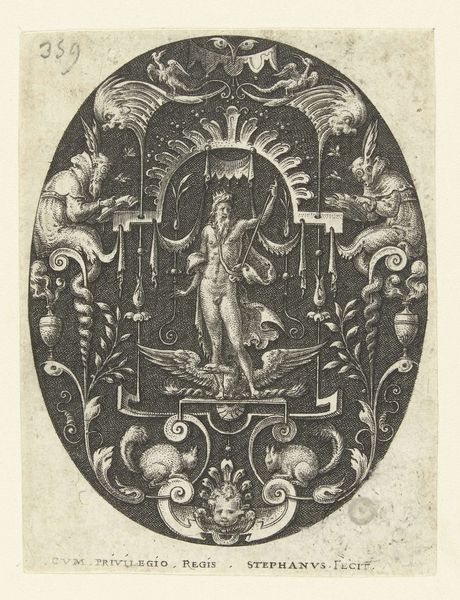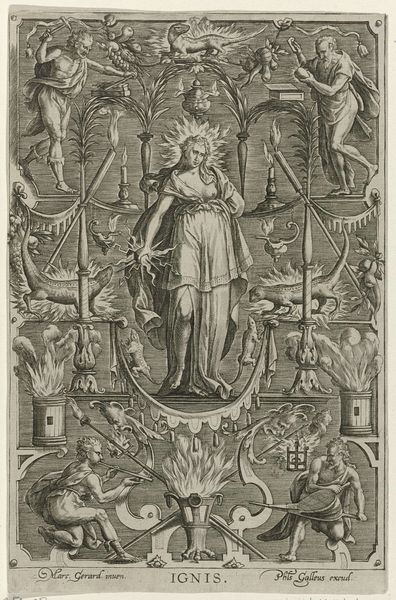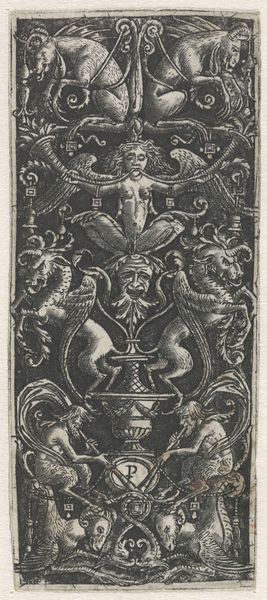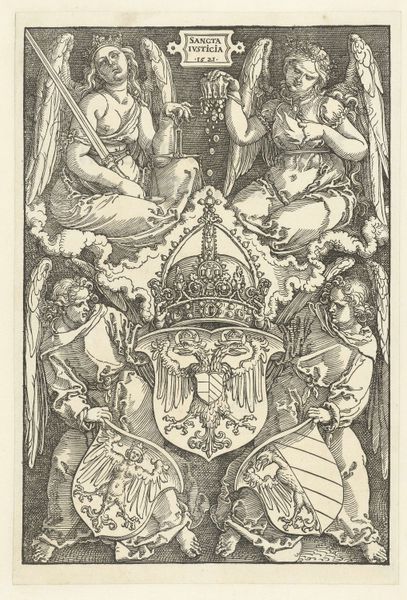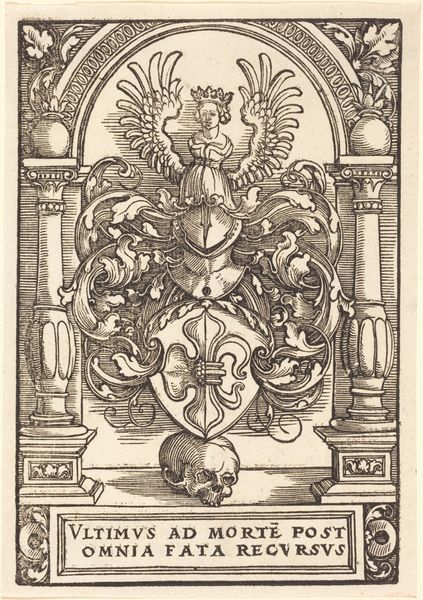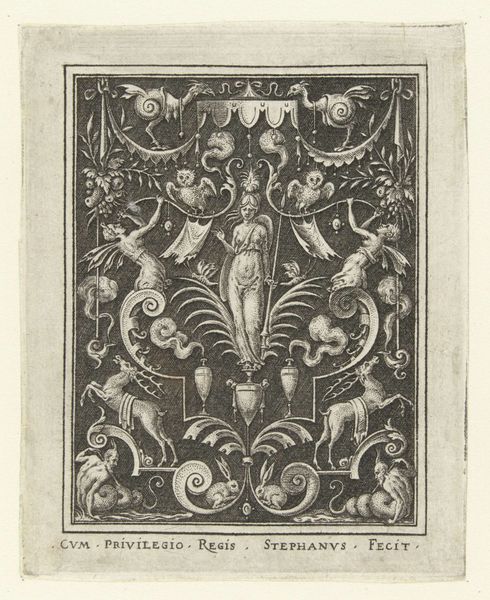
Dimensions: sheet: 7 5/16 x 5 11/16 in. (18.6 x 14.4 cm)
Copyright: Public Domain
Albrecht Durer made this engraving of the Arms of Johann Tscherte using a technique very similar to that of a goldsmith. He began by preparing a metal plate, most likely copper. Using a tool called a burin, he incised lines directly into the surface. This required immense skill, as any mistake was difficult to correct. The depth and spacing of the lines determined the darkness of the printed image; closer lines hold more ink, creating darker areas. Look closely, and you can see the incredible detail Durer achieved: the texture of the foliage, the musculature of the figures, the heraldic symbols. This wasn't just a mechanical process. Durer elevated printmaking to a fine art, demonstrating a level of craftsmanship that rivaled painting. The print could then be reproduced many times over, democratizing images and ideas. This speaks to printmaking’s essential contribution to the rise of modern capitalism. With this one image, Durer combined the specialized skill of the hand with the efficiency of reproduction, and in doing so challenged hierarchies between art and craft.
Comments
No comments
Be the first to comment and join the conversation on the ultimate creative platform.
